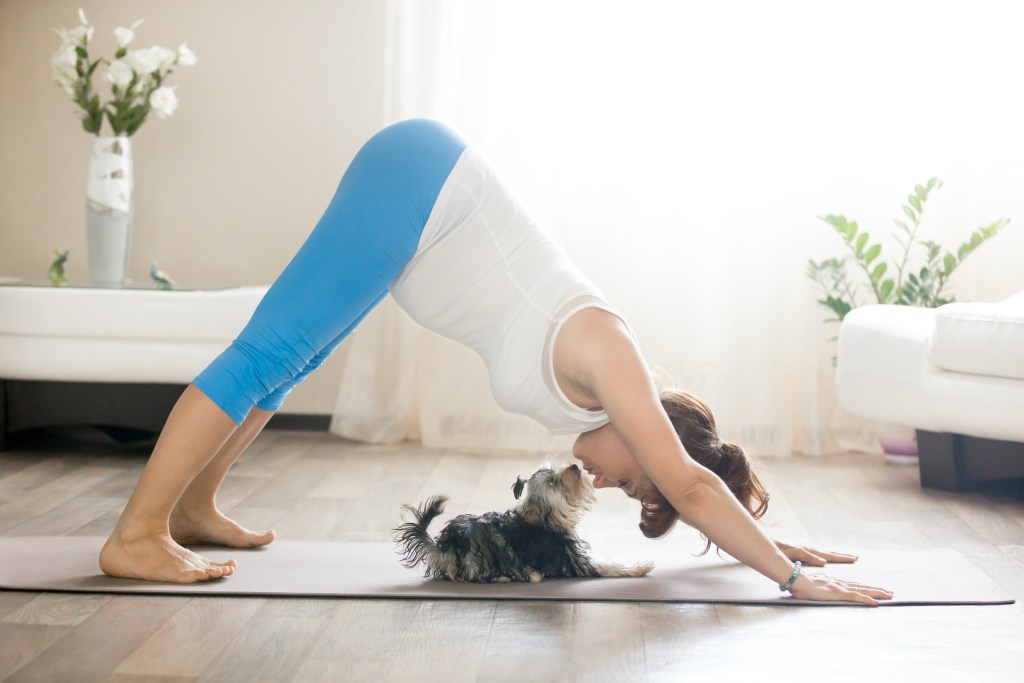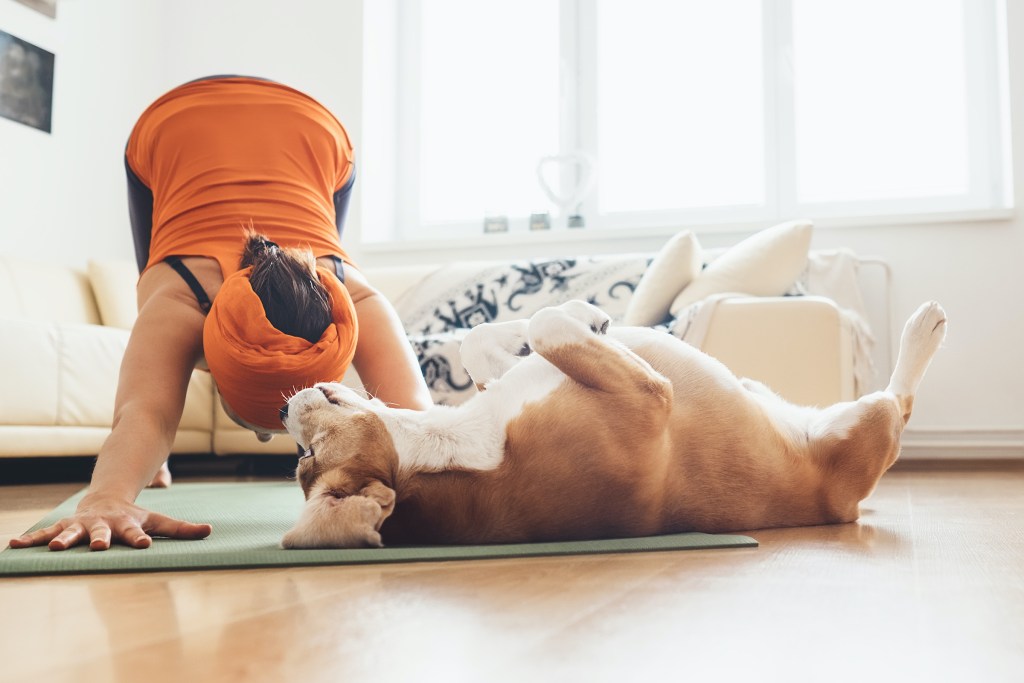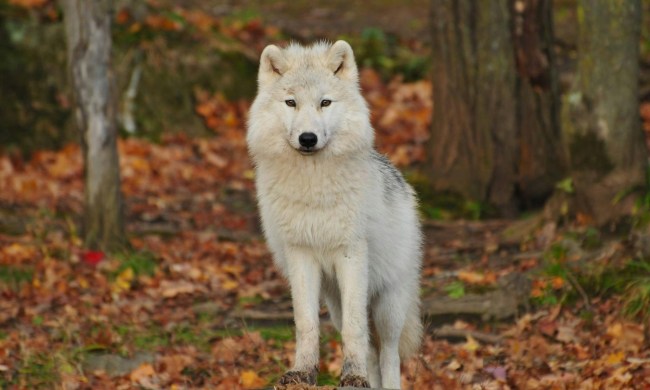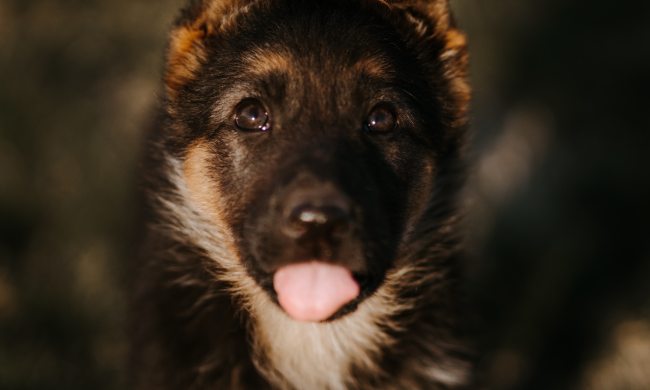Move over, cat videos: Dog pictures and videos have been taking the internet by storm. From talented pooches and rescue stories to the newest pet care crazes, you can find it all — including dog yoga. There isn’t just one video of dogs doing yoga with their owner, either, so where did this trend come from?
Whether or not you’re considering trying it out for yourself, reading up about dog yoga will keep you in the loop. Plus, you get to see the cutest pictures! Here’s everything you need to know about yoga with dogs.
What is dog yoga?
Although you may have seen these viral videos of adorable pups mirroring their humans’ yoga poses, the actual practice of “doga” — that is, dog yoga — isn’t quite so literal. When formally practicing doga (which really isn’t so formal), a pet parent moves through specific poses that integrate their pet and focus on many characteristics of dogs that people could learn from. Going with the flow, for example, is a popular lesson in dog yoga; you’ve never seen a pup stress out about their posture, have you?
Although a particularly aware dog might join in on the stretching and chanting, most pups either chill with their owner or socialize with one another during a yoga session. Some poses ask owners to hold or even lift their furry friends for an added dose of cute, but extra-squirmy pets might be more content watching from the ground. And that’s OK! It’s not about perfection, anyway (that’s lesson number two from our doggie instructors).
Just like yoga, doga can be practiced either alone or in a group. There are many books and videos to guide a solitary session, though in-person classes can be harder to come by depending on where you live.

How did dog yoga become popular?
Doga debuted in the U.S. in 2003 in the form of a book. Doga: Yoga for Dogs combines natural canine movements with well-known yoga techniques to create a unique, dog-inspired practice. Each pose is modeled by an adorable “dogi” (dog yogi) and is accompanied by a written explanation to help people try it, too.
Not long later, Swiss yoga teacher Mahny Djahanguiri found herself inspired to invent a practice that people and their furry friends could enjoy together. Her own book, Doga: Yoga for you and your Dog, hit the shelves in 2015. This style of doga will have you holding your fur baby most of the time, so larger dogs might not be the ideal companion for this pastime.
As social media continues to rise, many heart-stealing videos of dogs doing yoga with their owners have surfaced. This has most likely been the largest surge of awareness doga has ever seen, and it’s probably not going to end soon.

Is dog yoga safe for dogs?
Doga — in practice and video form — has been both praised and criticized. Many yoga enthusiasts consider dog yoga to be more of a fad than a practice, claiming that it trivializes an otherwise serious practice. Of course, everyone has their own opinion.
One criticism to take very seriously is the concern over pet safety. If you’re attending a group, make sure that you’re confident in your dog’s ability to play nice and be calm. Don’t attempt any poses with your pet until you feel comfy with them alone, just to make sure no one gets hurt. If anything ever feels iffy to you, don’t do it!
When it comes to cuddling your dog while you stretch or letting them stretch out beside you, you’re good to go. Dogs naturally stretch and get into all kinds of crazy positions just to get comfortable, so a little activity sure won’t hurt. In fact, it could help! Older dogs or those with arthritis may benefit from some light exercise and stretching (via New York Times). Of course, if your pup doesn’t feel like being held, don’t force them since panicking is when they’re more likely to hurt themselves. As long as everyone stays calm, though, doga can be a safe and fun activity to share with your dog.
Whether you’ve done yoga before or have no clue what to expect, trying the technique alongside your furry friend has so many benefits. Doga can be a fantastic way to bond with your dog while getting a bit of exercise — or at least a few minutes of relaxation — yourself. At the very least, you’re definitely in for a smile or a laugh, so there’s no way to lose.



